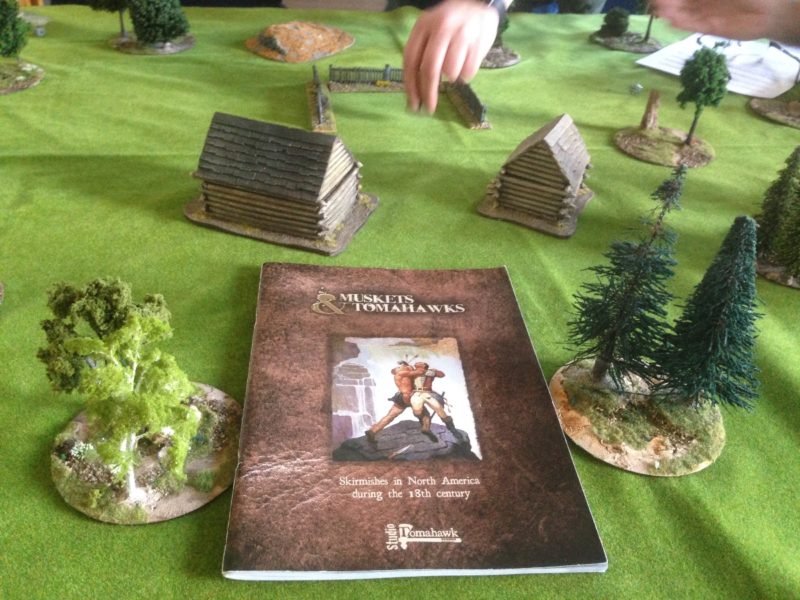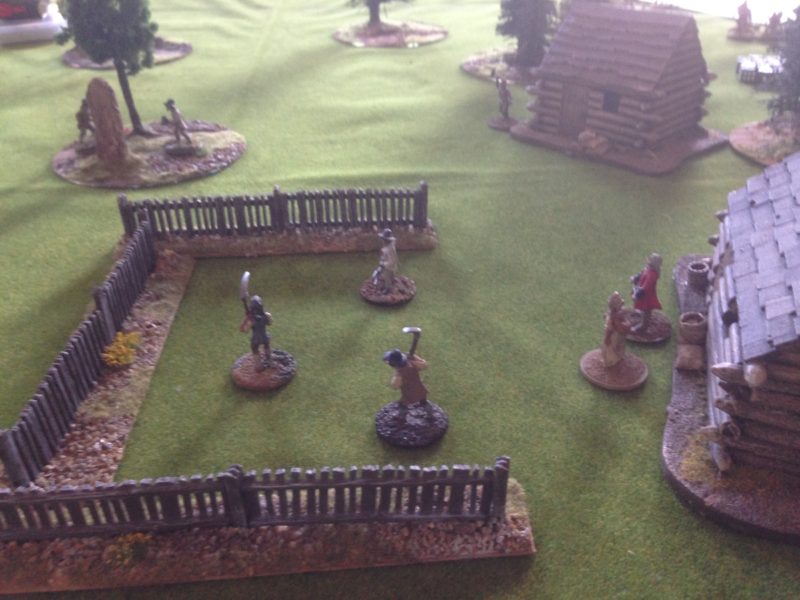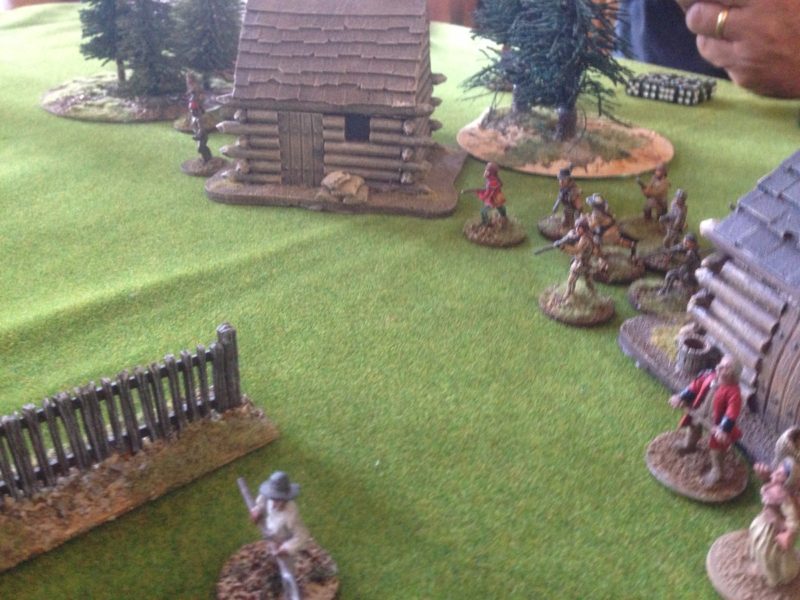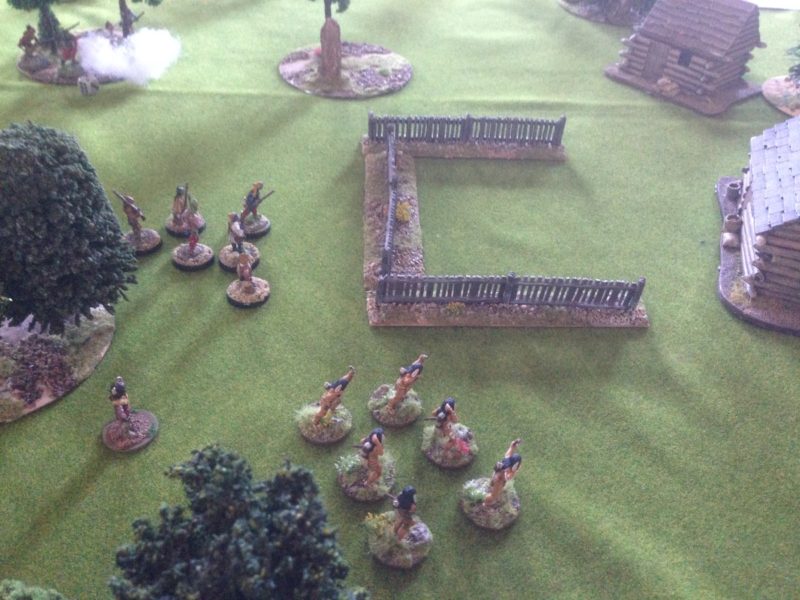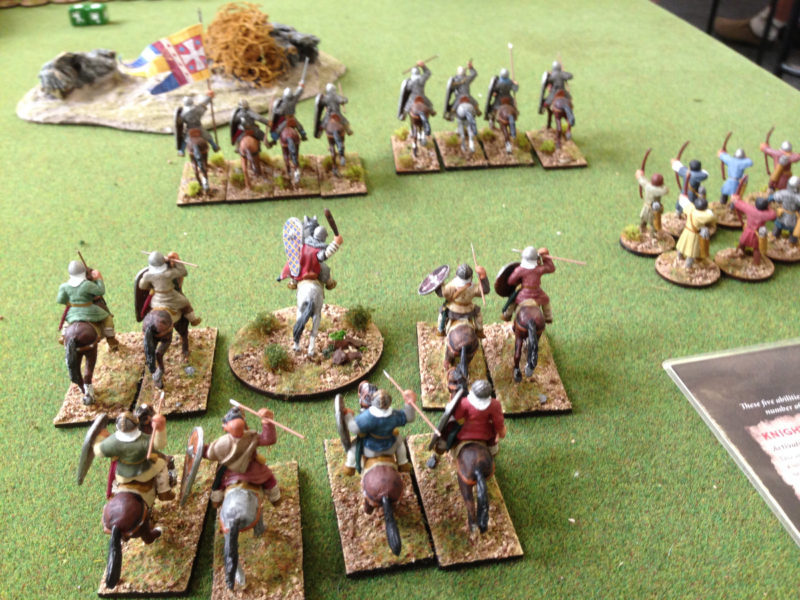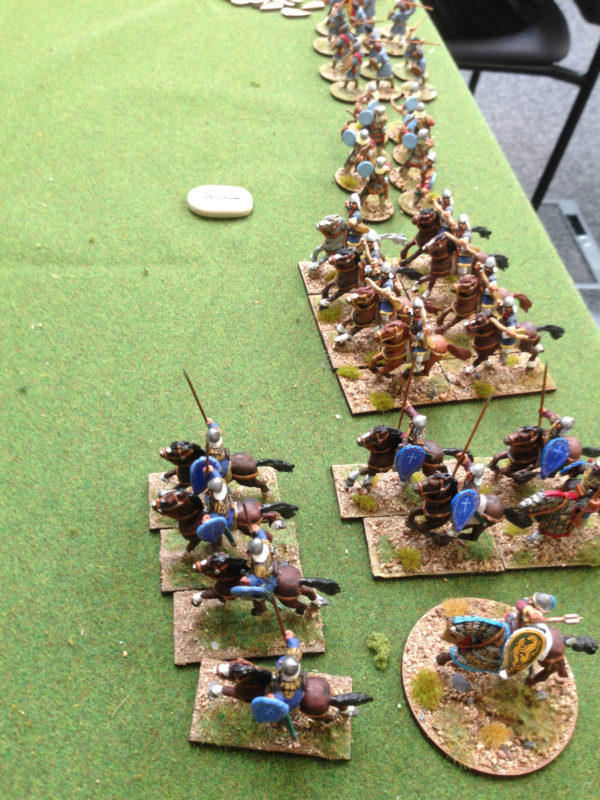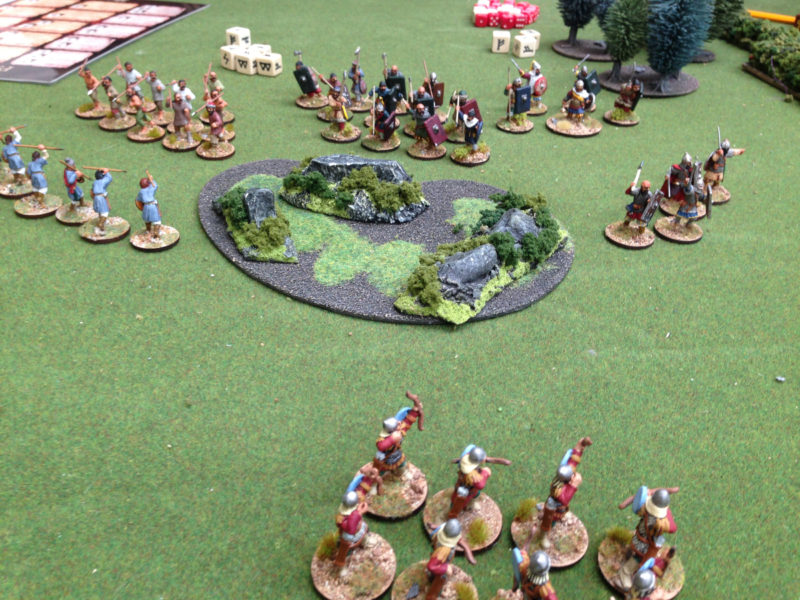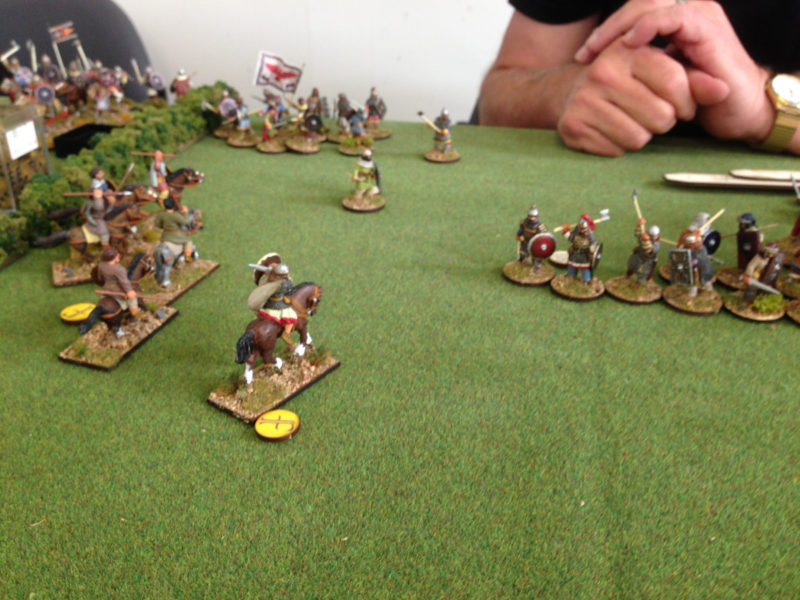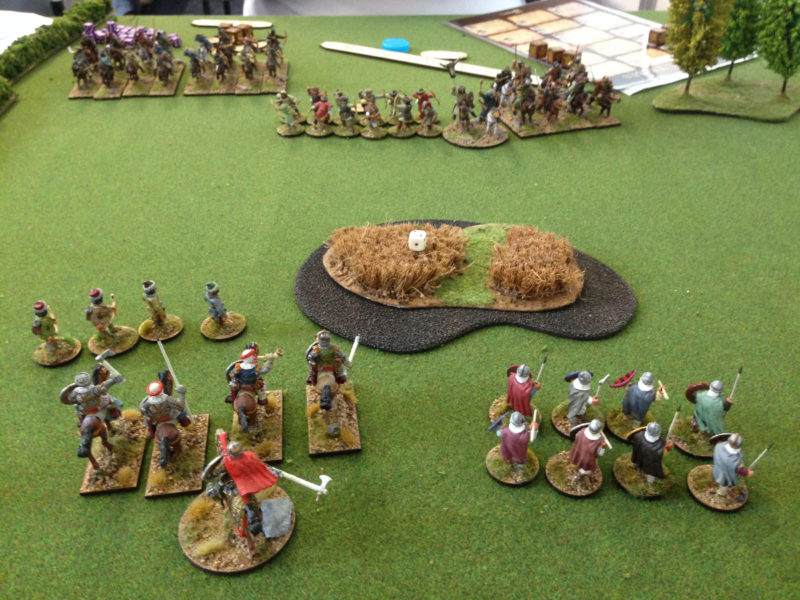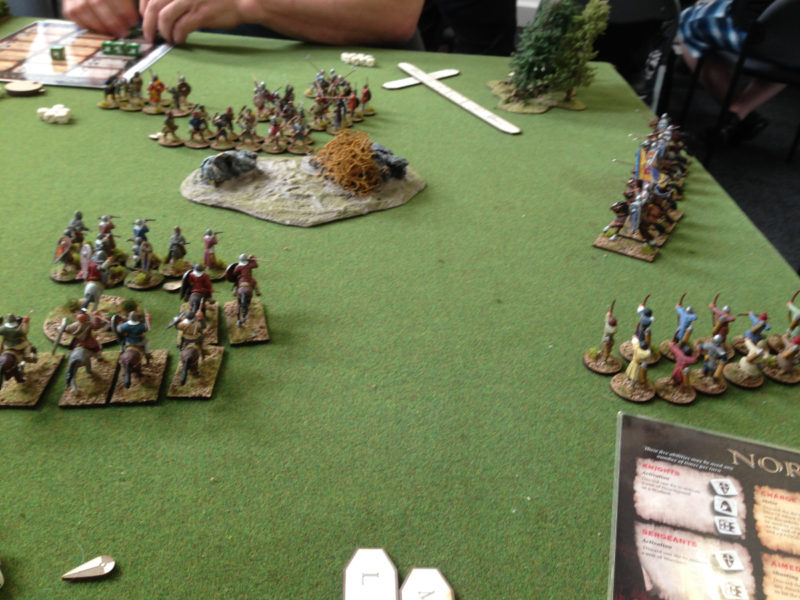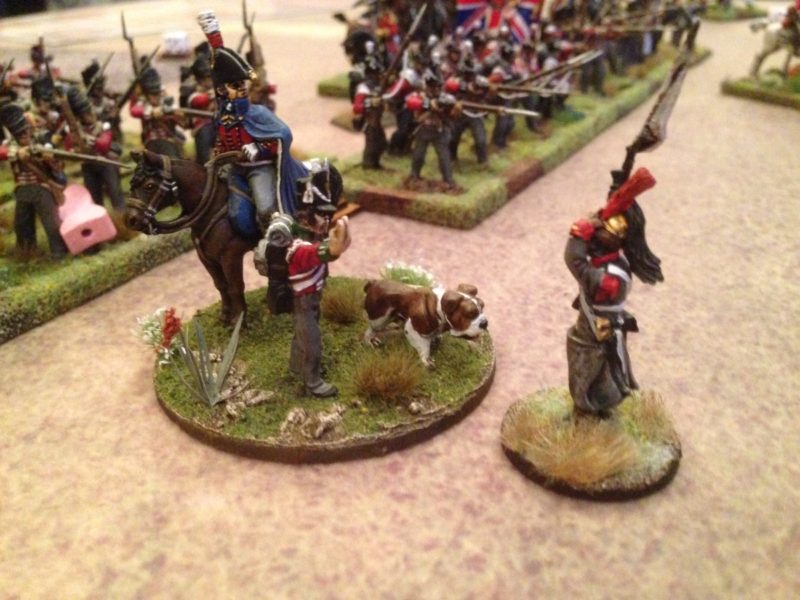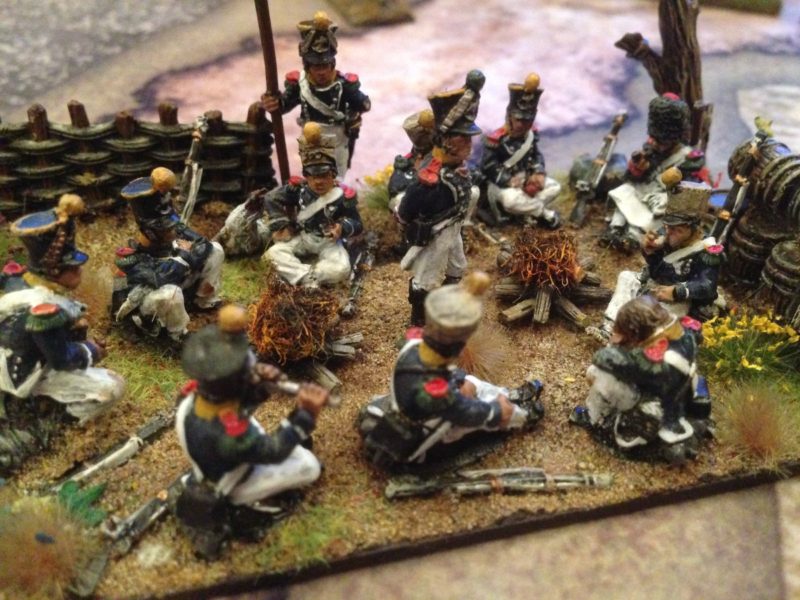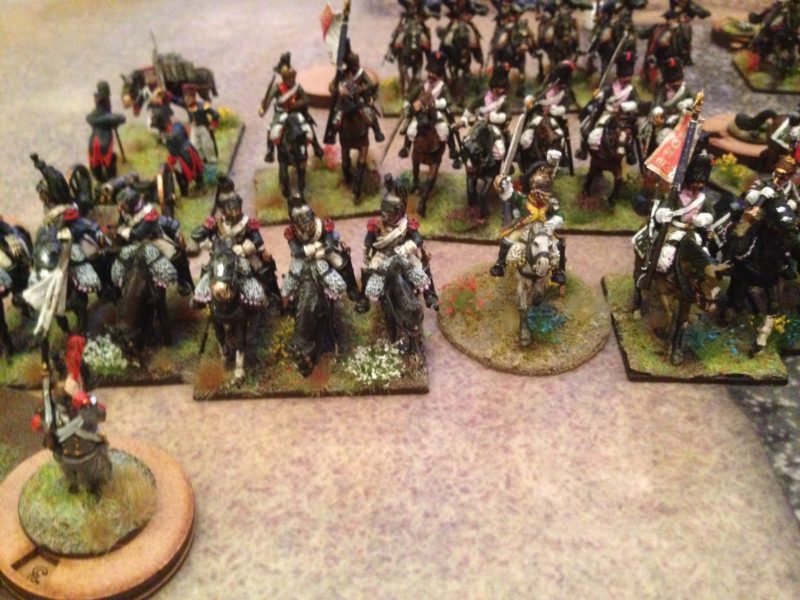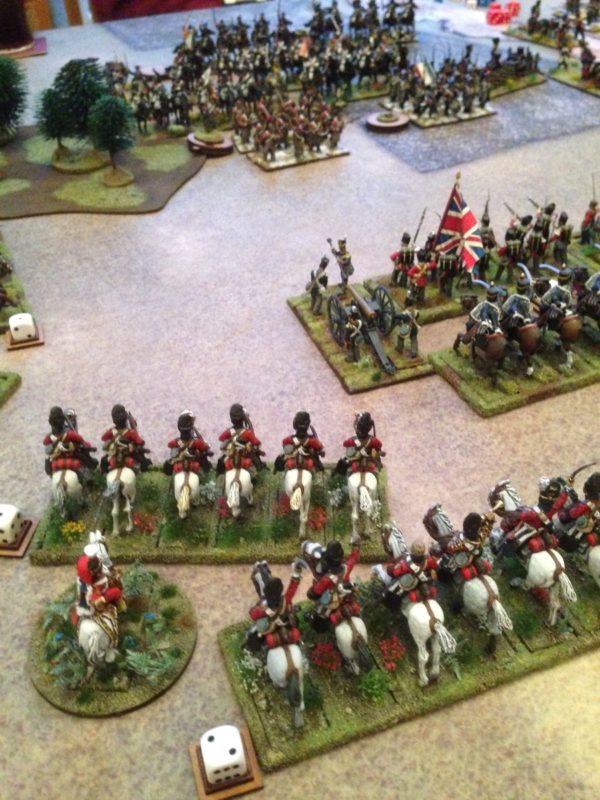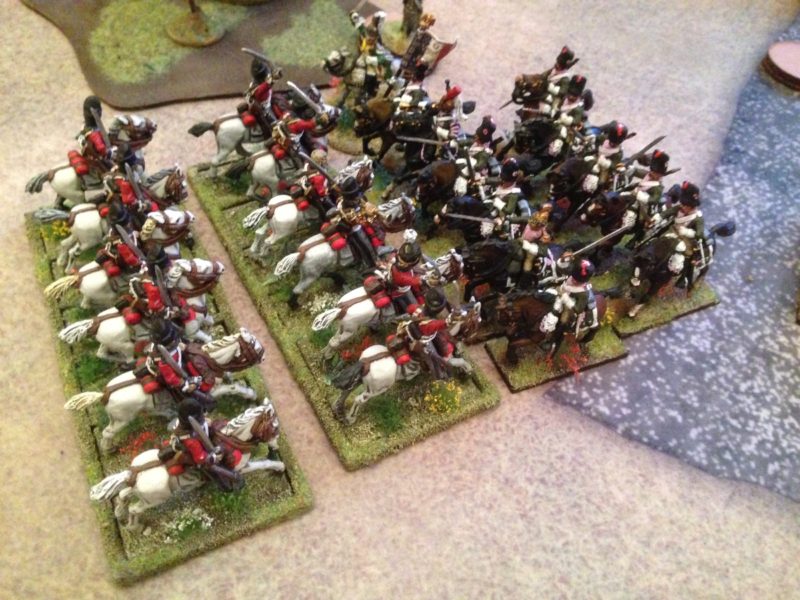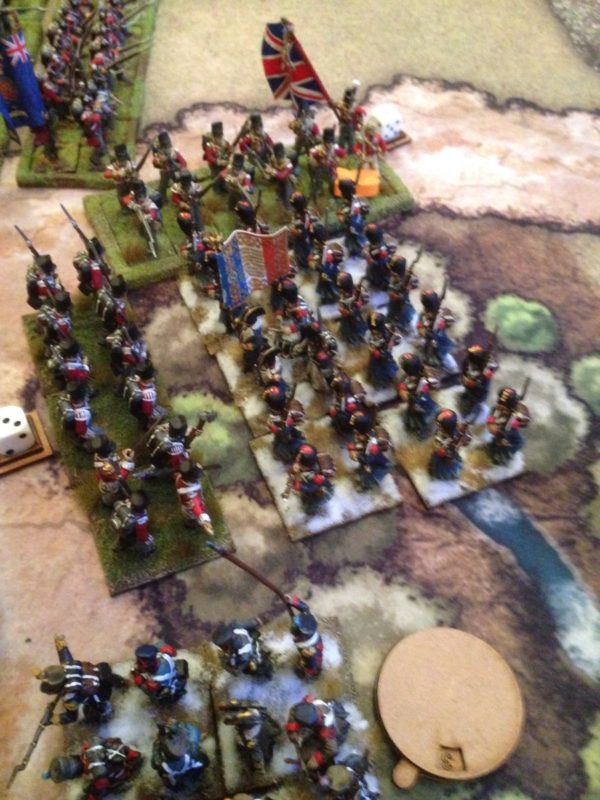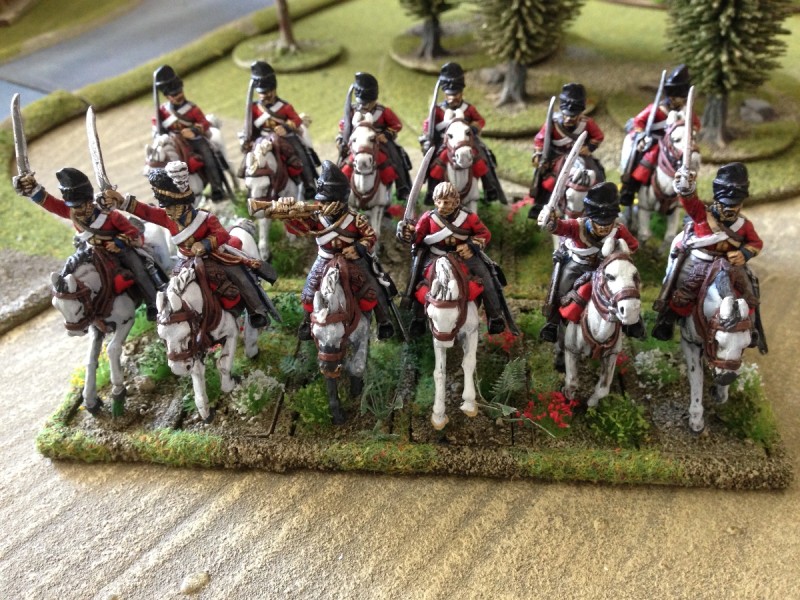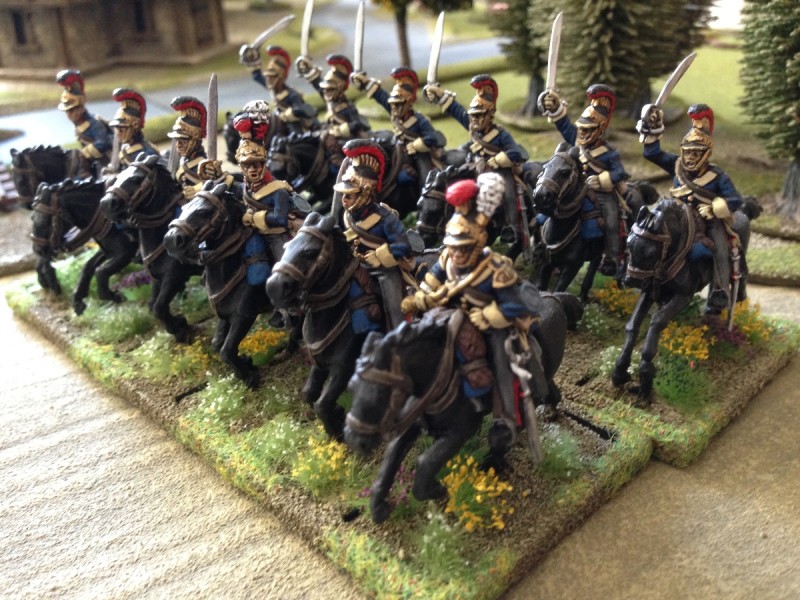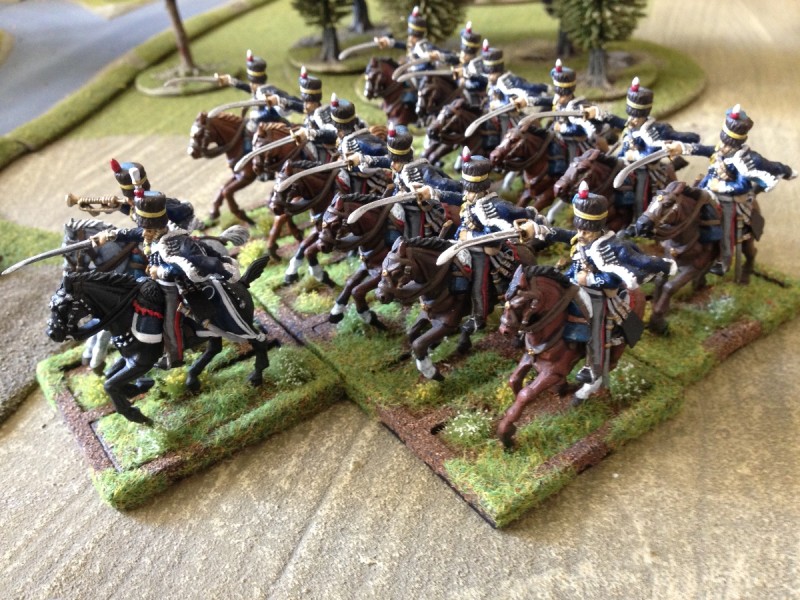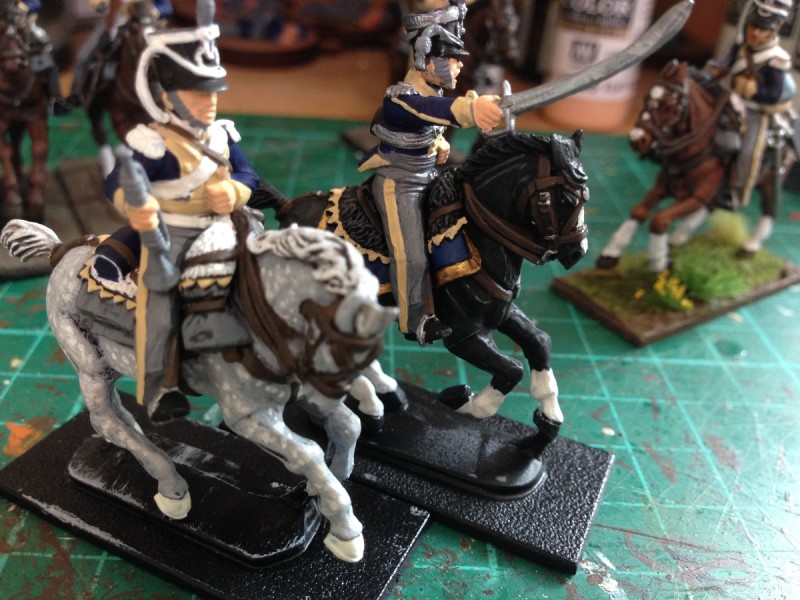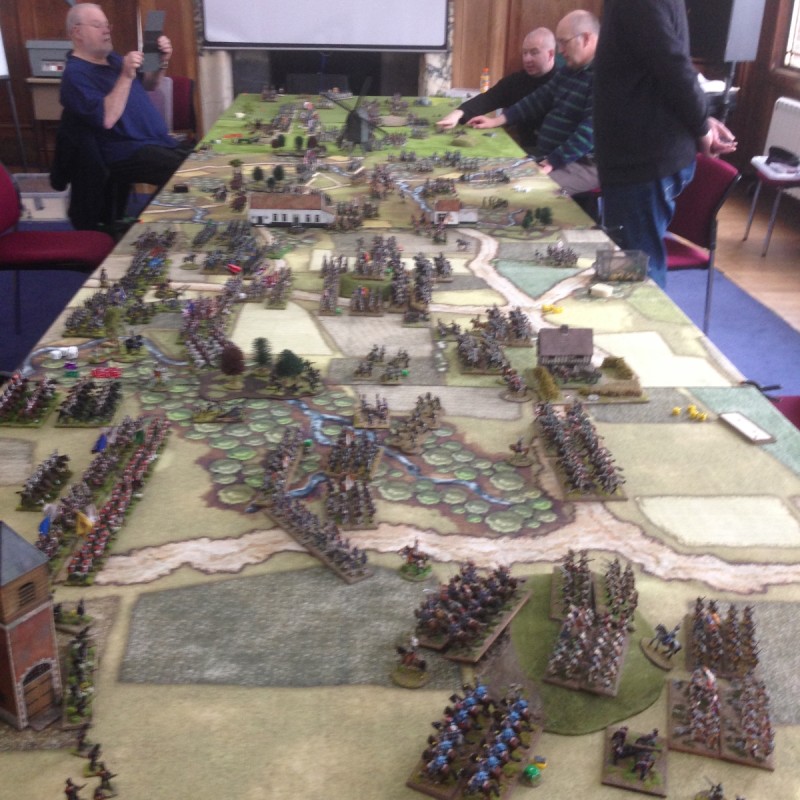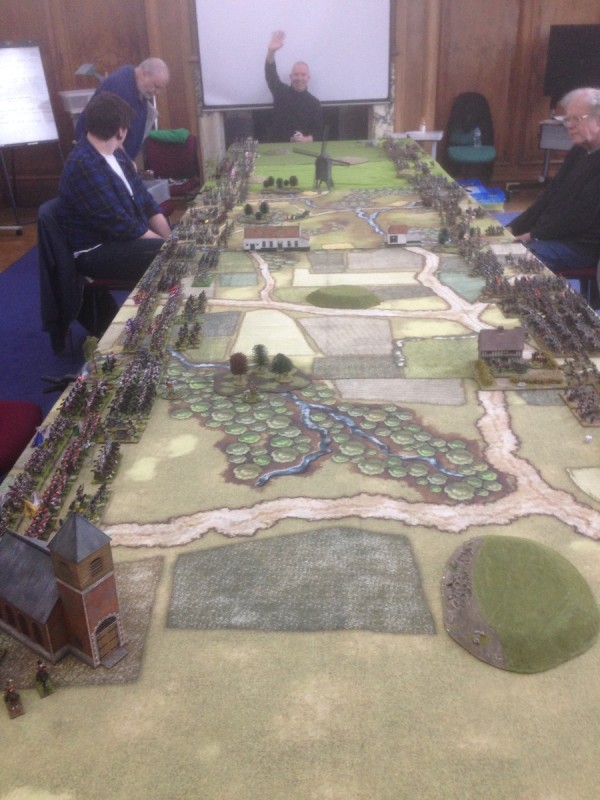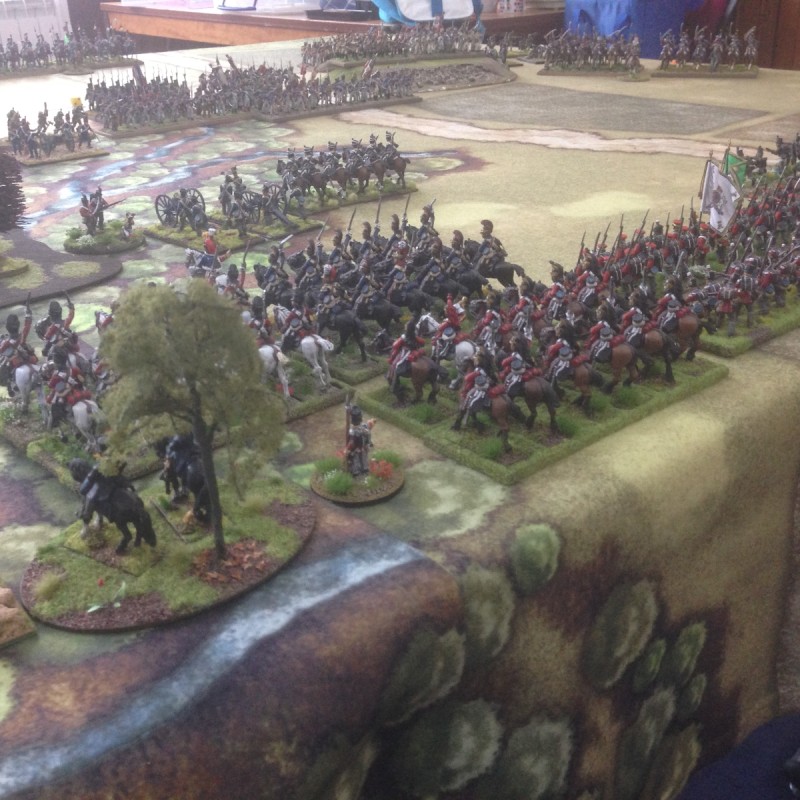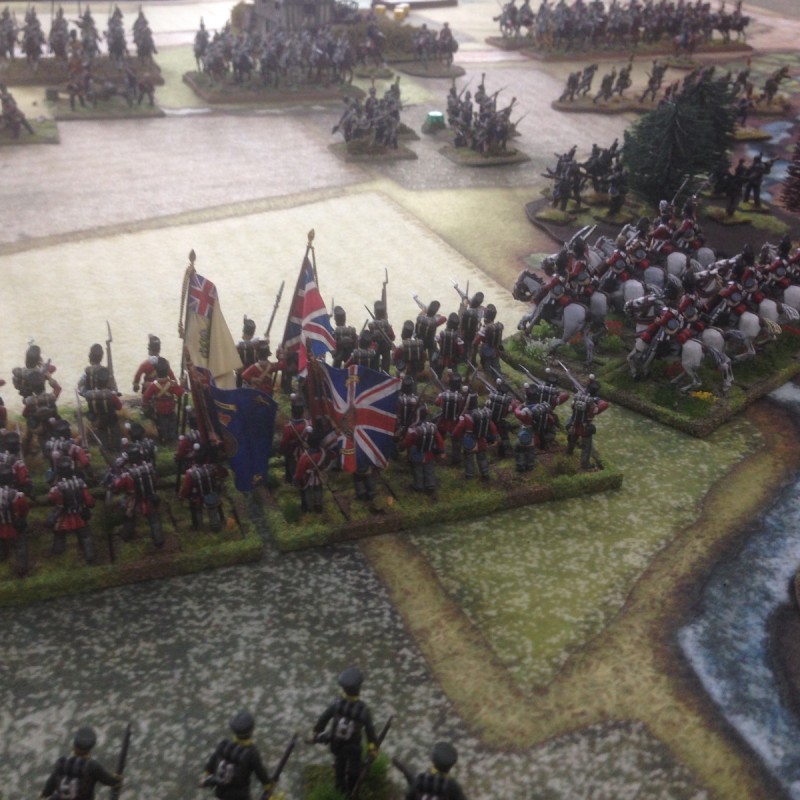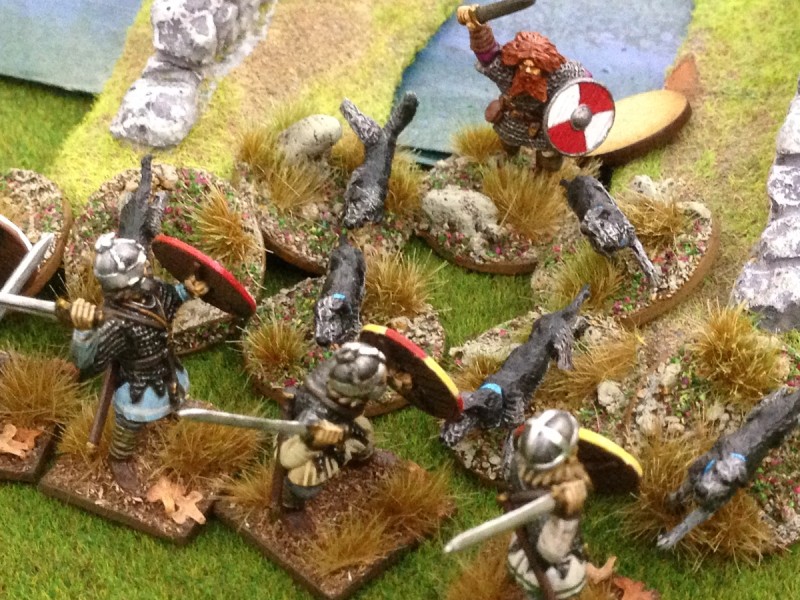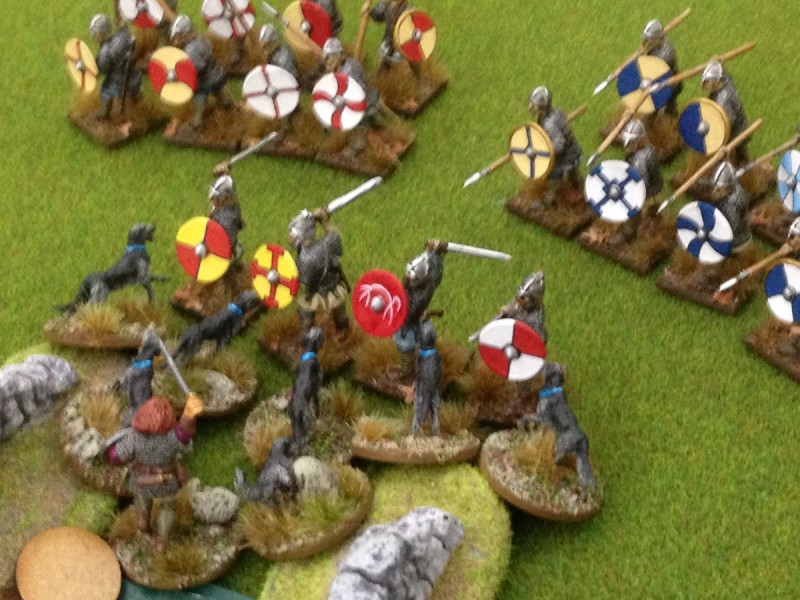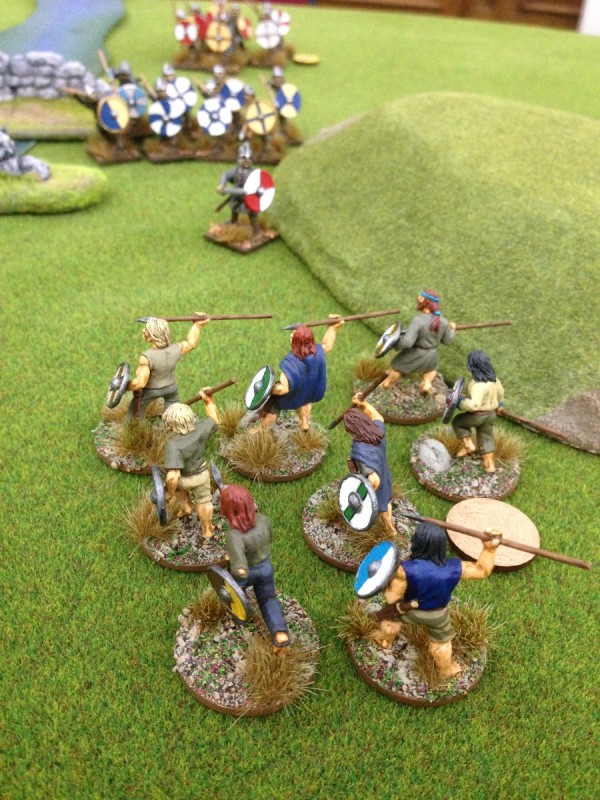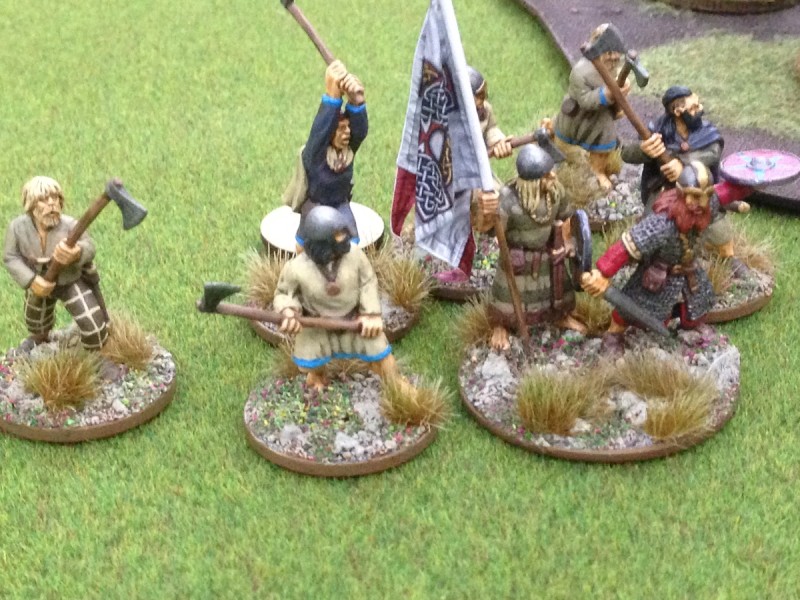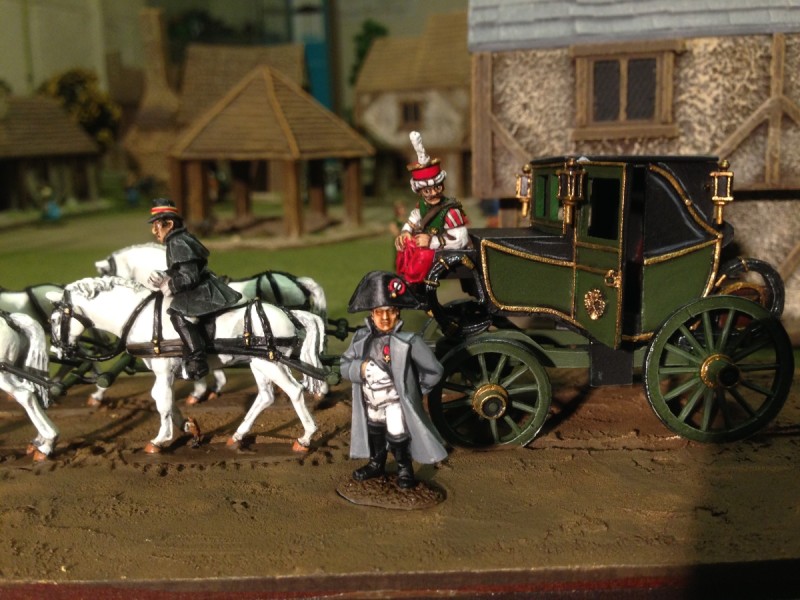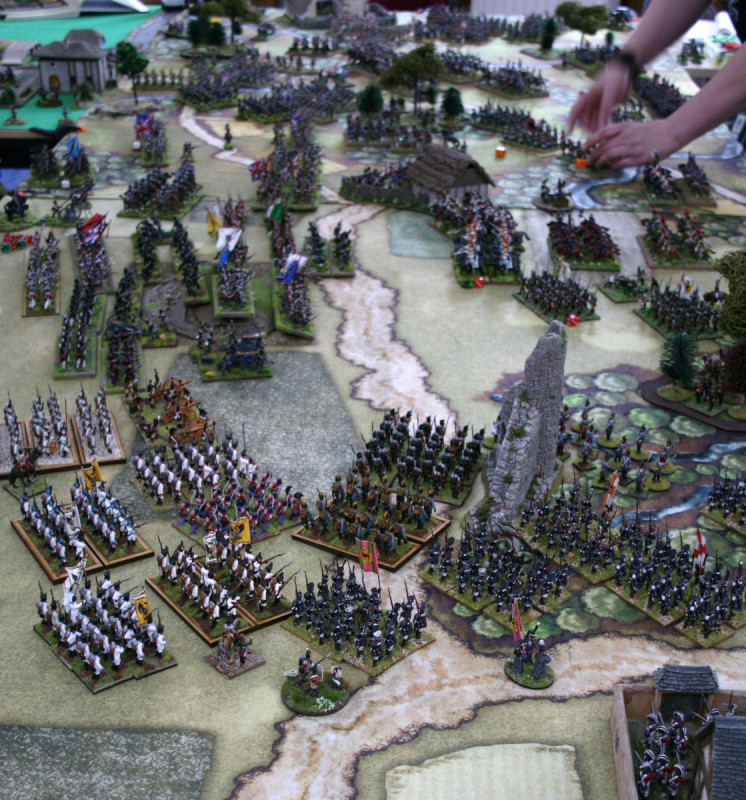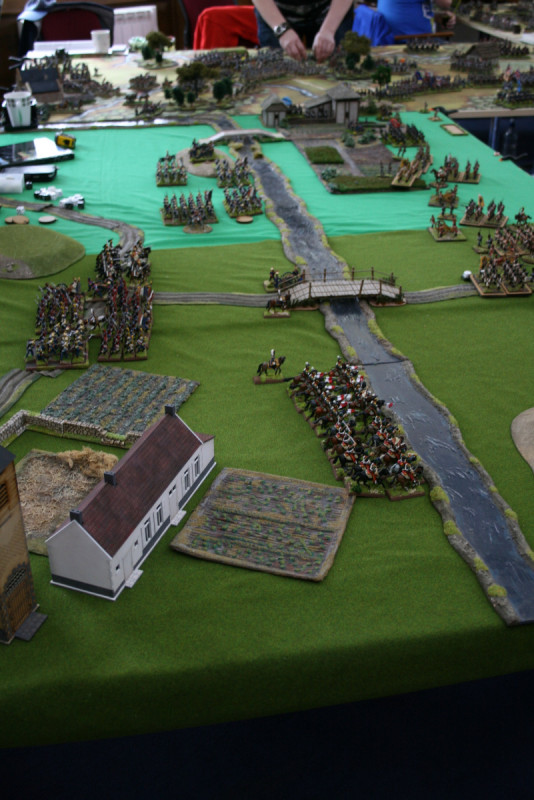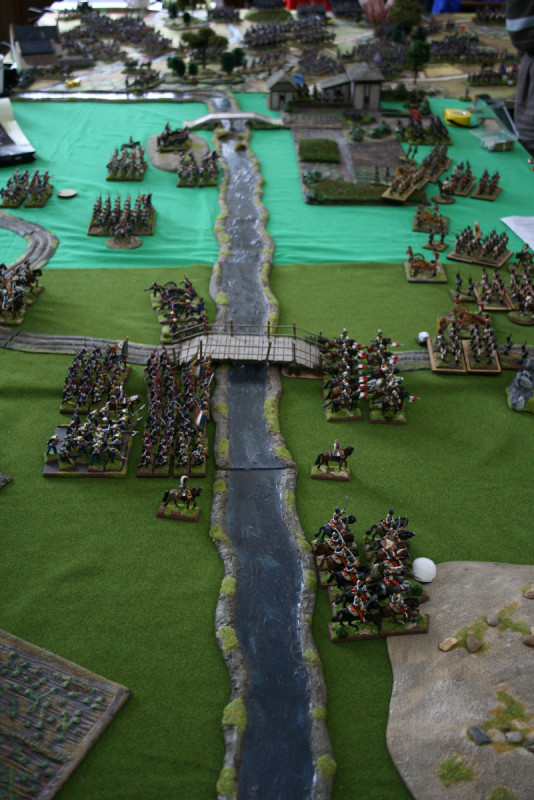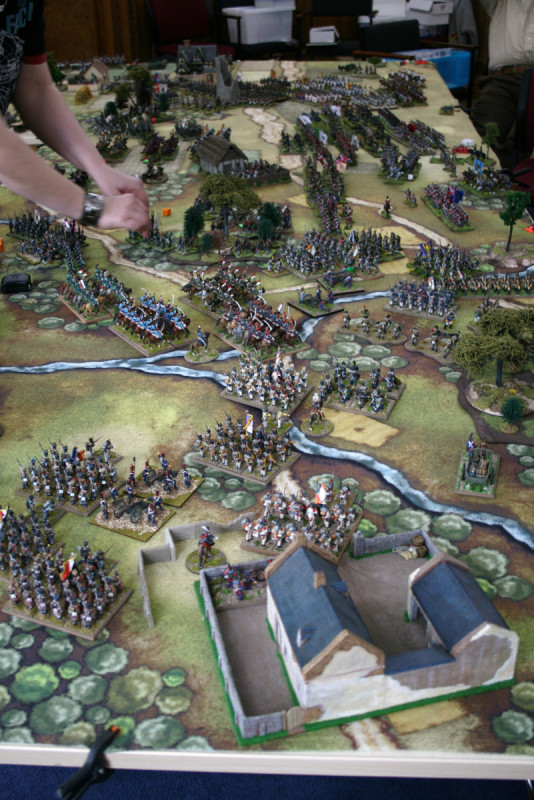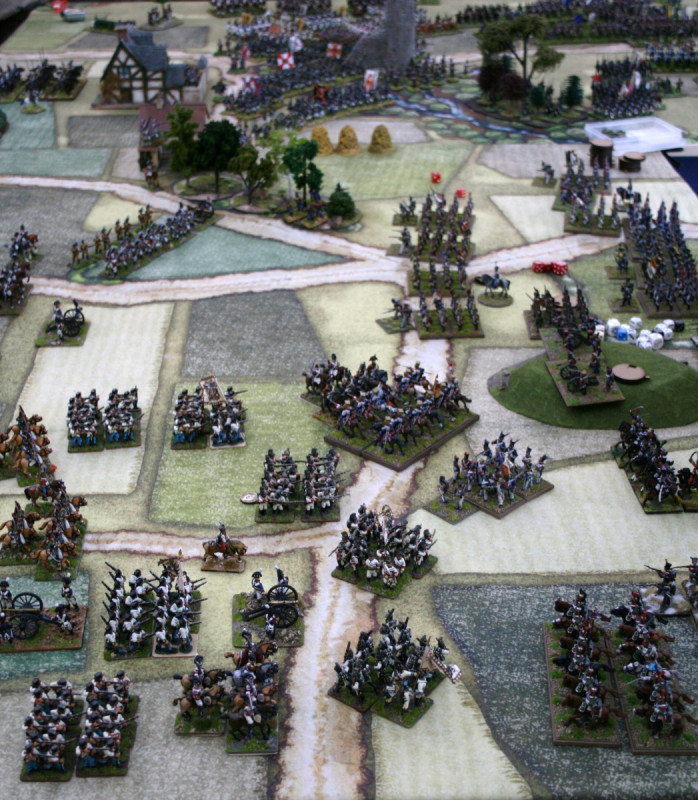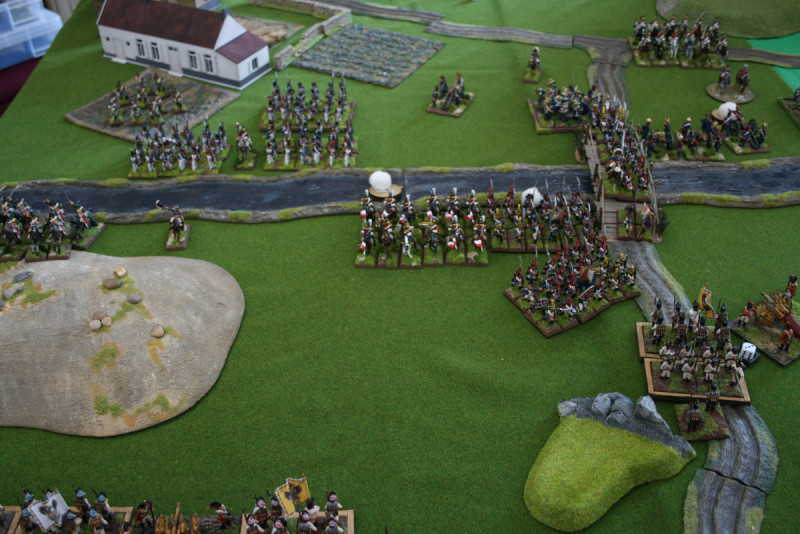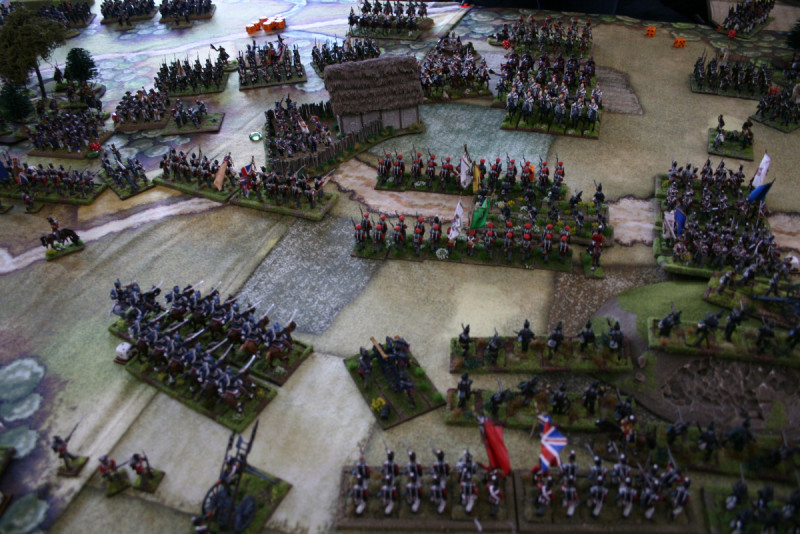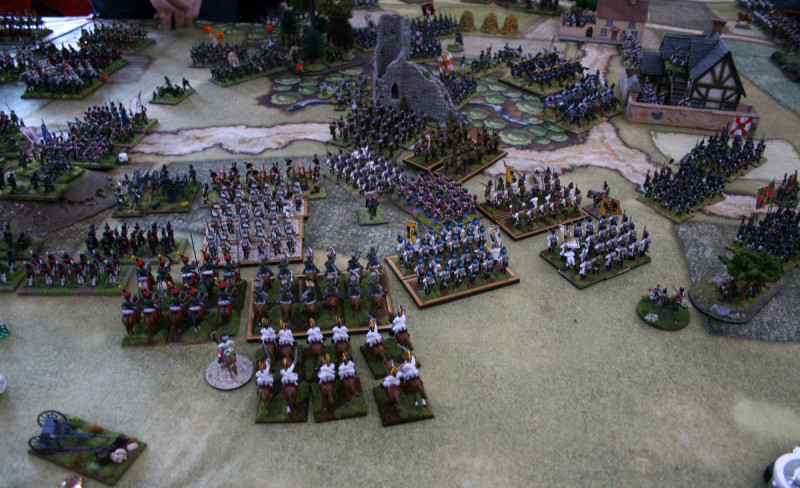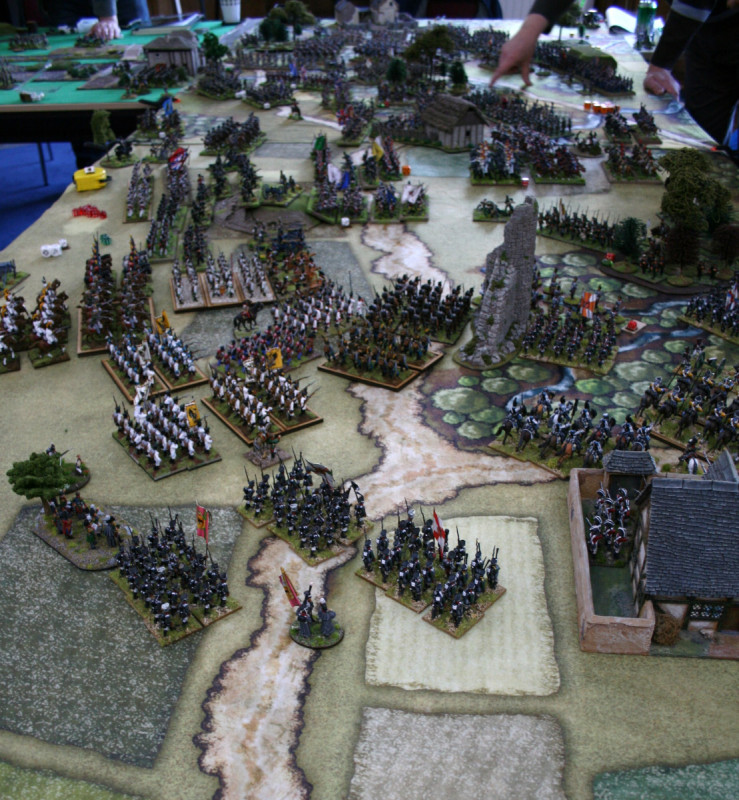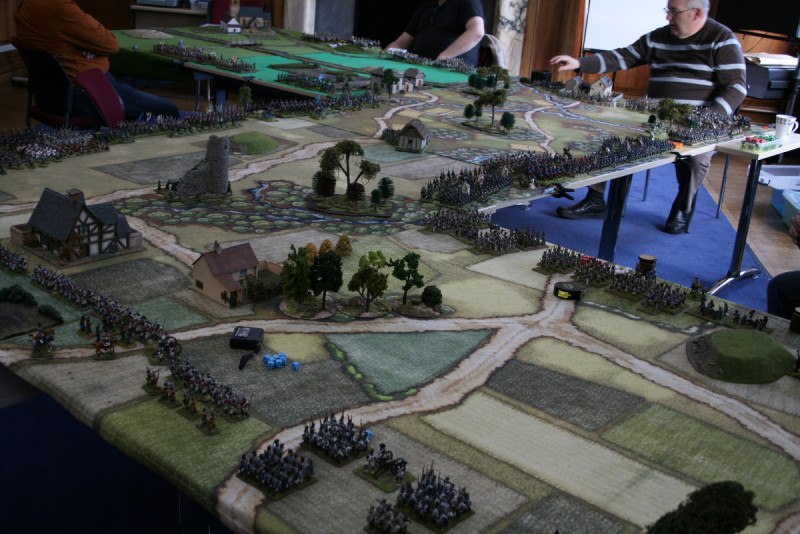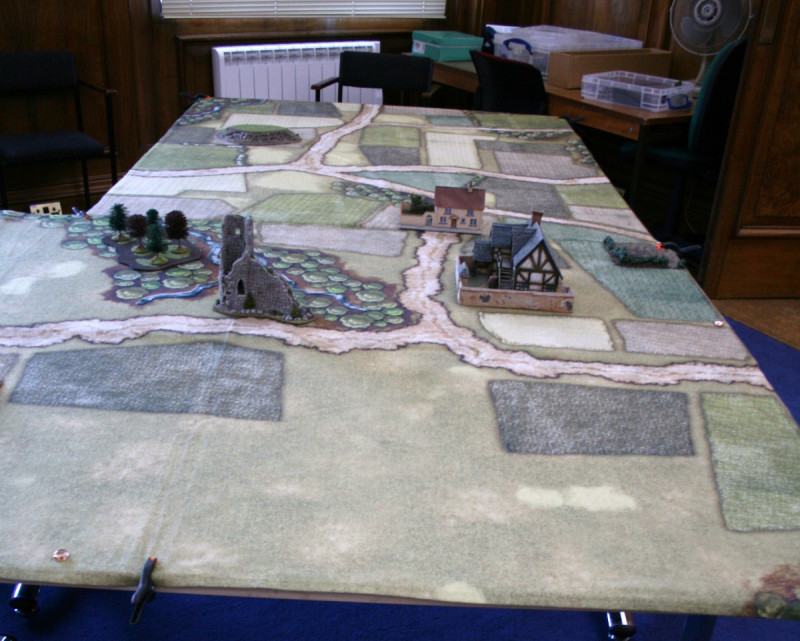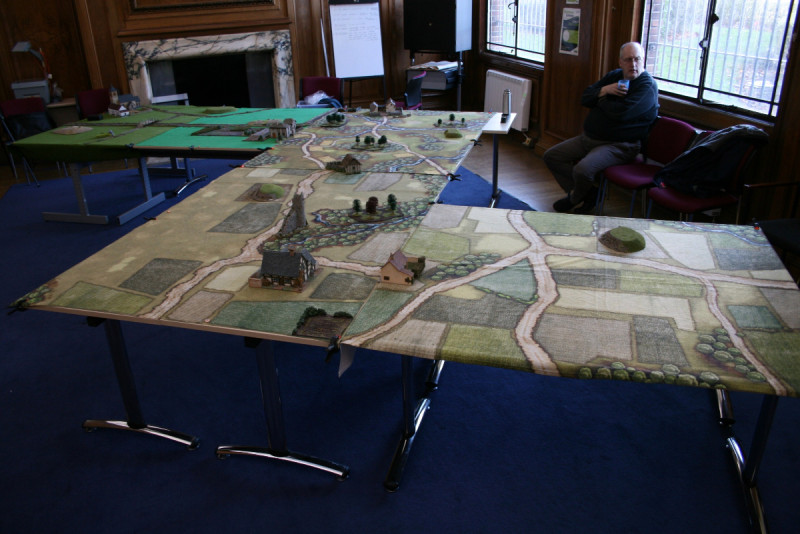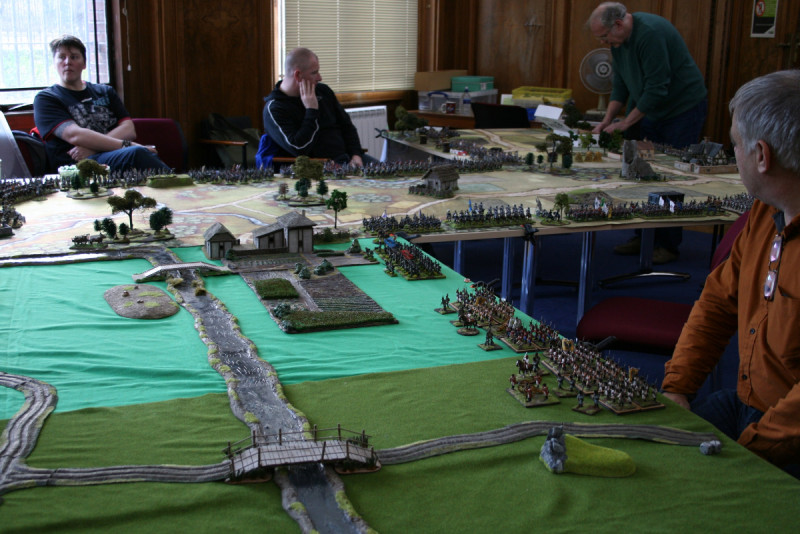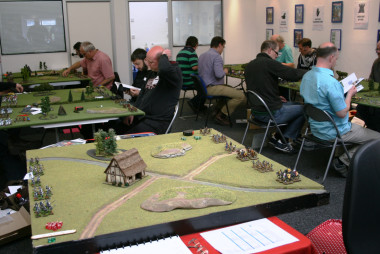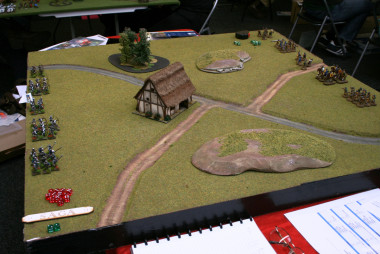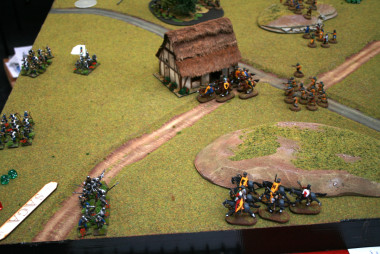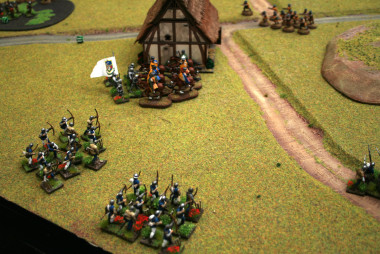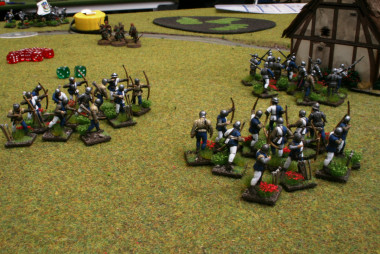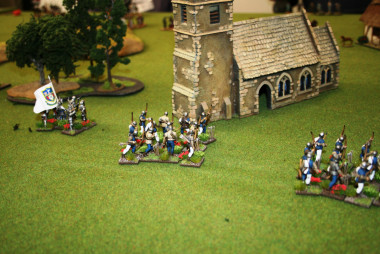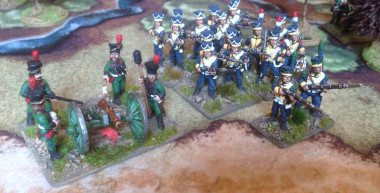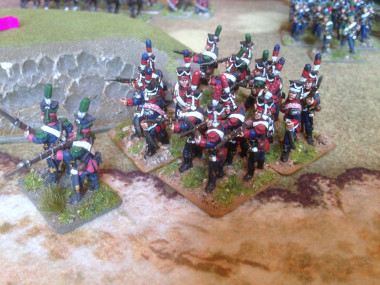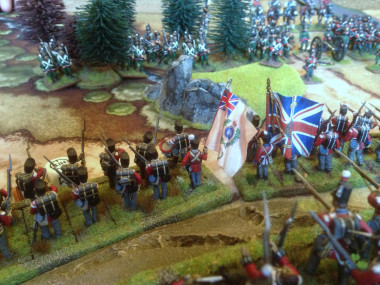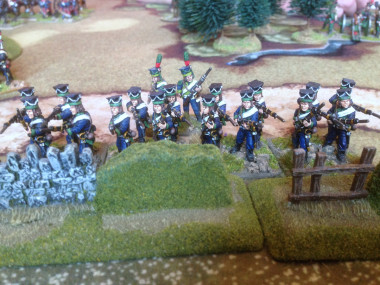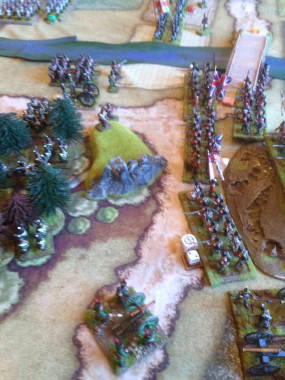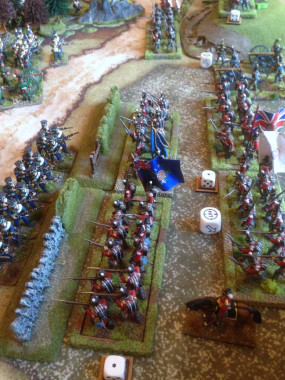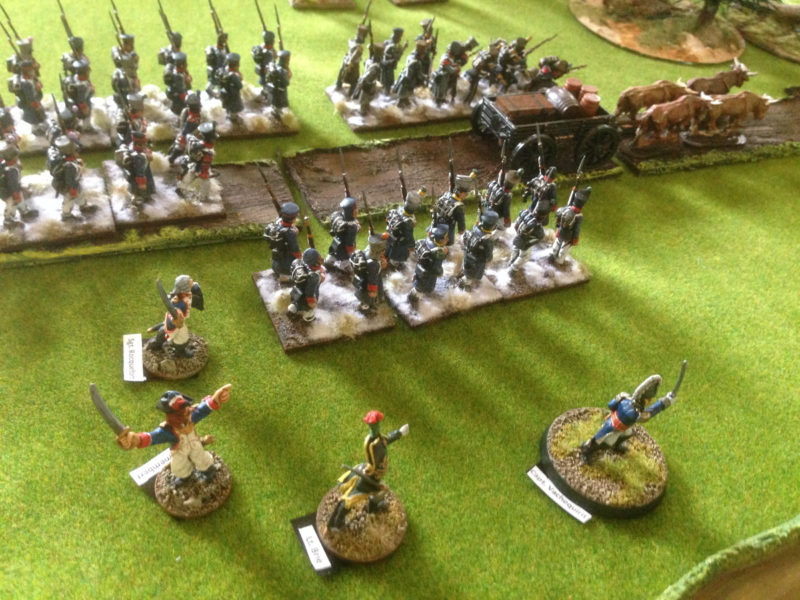
Sharp Tomahawks
Last week, following our game of Muskets and Tomahawks, our resident rules writer Andy Callan went away to see if he could come up with a simplified version of the game. Here is Andy’s explanation of how he went about the task :
‘The Nottingham White Hart wargamers regularly play a number of different games – Sharpe Practice and Muskets & Tomahawks amongst them. Whilst these are games we can enjoy playing, we don’t play them often enough for the rules to get fixed in our minds and we often find ourselves getting the two sets confused and then wasting time trying to find stuff in the rule books.
So, I set myself the task of taking inspiration from these two sets and coming up with something that we would have a chance of remembering (two sides of A4, tops!). I was aiming for a set of hybrid rules with a card-driven turn sequence and simple but consistent rules for Firing and Hand to Hand Combat. The cards would be usable in any “Black Powder era” setting and the “stripped-down” rules would serve as a core set to which any “period-specific” bells and whistles could be added, on a game by game basis. Army lists and scenarios could either be made up or adapted from published sources.
The result is “Big Skirmishes/Small Battles – rules for old wargamers with short attention spans” (or “Sharpe Tomahawks”, if you like…).
See what you think…’
Andy not only produced a simple set of rules but also went to the trouble of designing a Scenario that would let us put the rules to the test. In this weeks blog, I’ll show you the way the scenario played out with a short battle report. Next week, I will include the rules that we used along with some clarifications, so if you fancy giving it a go yourselves, you can download the rules and scenario. First of all, the players briefing from Andy:
The Emmenemmthal Valley, Austrian Tyrol, 1809
A long battlefield, dotted with woods, with a road and a stream down its length, crossed by a stone bridge at the half way point. The game is played end to end, down the length of the table.
A French foraging party has been sent up the valley to seize stocks of the local cheese and whatever else they can lay their hands on. Their commanding officer, Capitaine Vachequirit, has a sideline acting as an agent for Marshal Murat, with orders to “liberate” any fine artworks suitable to decorate the new royal palace at Naples.
Apart from its cheese, the valley is famous for a jewel-encrusted statue of the Virgin Mary (known locally as “the Madonna with the big rubies”), so the godless French have seized her and slung her in a wagon along with all the looted food and schnapps.
Having accomplished their dirty deeds, they are now making their way back down the valley, somewhat encumbered by an over-loaded, ox-drawn wagon. But the church bells are ringing out and armed men can be seen gathering on the hillsides…
Cast list :-
The French : Caporal Camembert, Sergeant Rocquefort, Lieutenant Brie, Capitaine Vachequirit.
The Austrians : Corporal Strudl, Sergeant Schnitzl, Leutnant Lauda, Captain von Trapp.
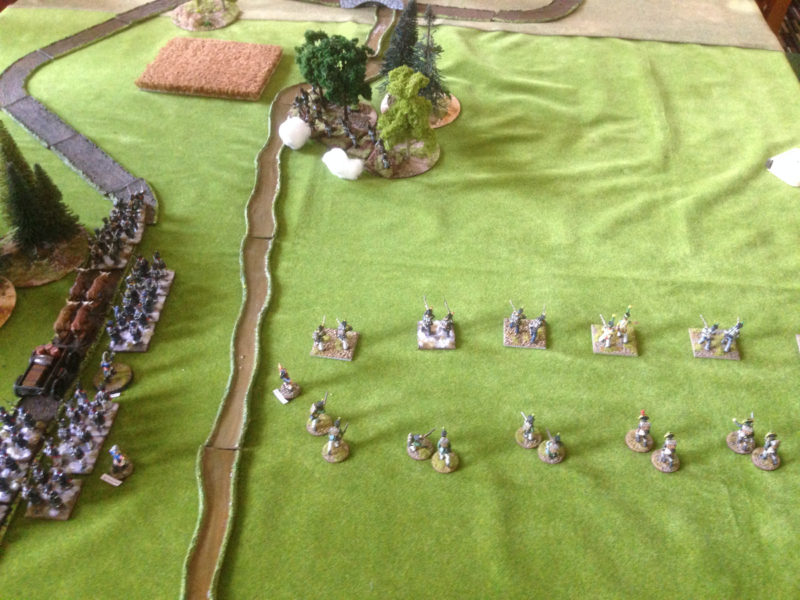
The French column advances, receiving fire from the defending Austrians in the woods.
The Battle
The initial Austrian deployment was hidden from the French at the start of the game. As the French column moved down the road, Tyrolean Landsturm skirmishers opened fire from the woods on the head of the French Column. The French response was to send their Skirmishers into the woods in an attempt to drive the Austrians out.
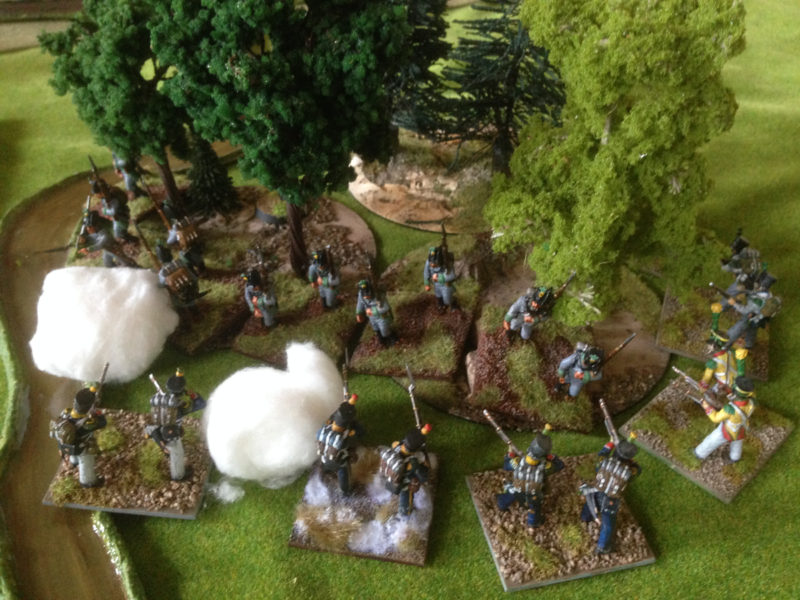
Skirmishers engage at the woods edge.
Despite the bravery of Sergeant Rocquefort, the French were repulsed by the gallant Corporal Strudl and the Austrians held their ground. However, enough time had been bought to allow the French Convoy to by pass the woods. Once again the French were surprised by the appearance of Sergeant Schnitzl leading the Tyrolean Landwehr who was concealed in the village. They took up position by the road and attempted to halt the column.
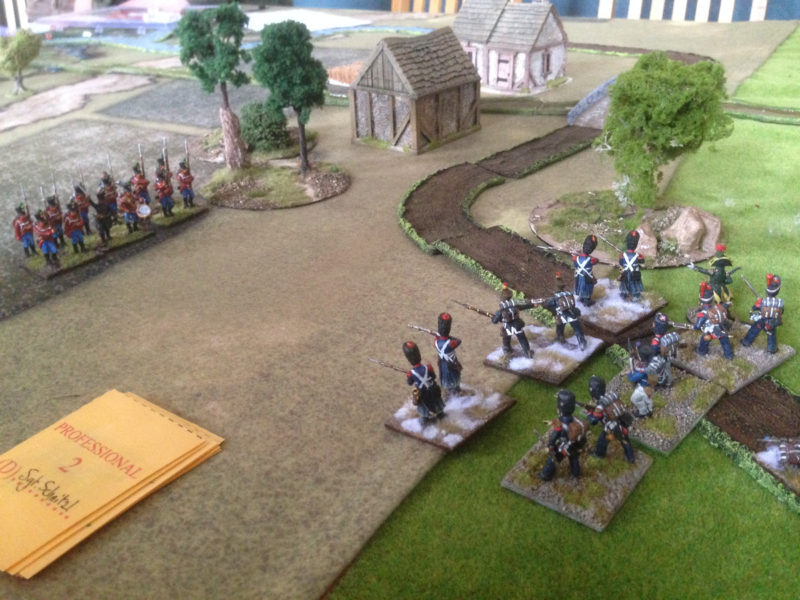
Austrian Militia take up position
The Militia bravely stood against the elite French Grenadiers led by Corporal Camembert but despite their best efforts the French bullied their way past with the convoy, mauling the Austrians in the process.
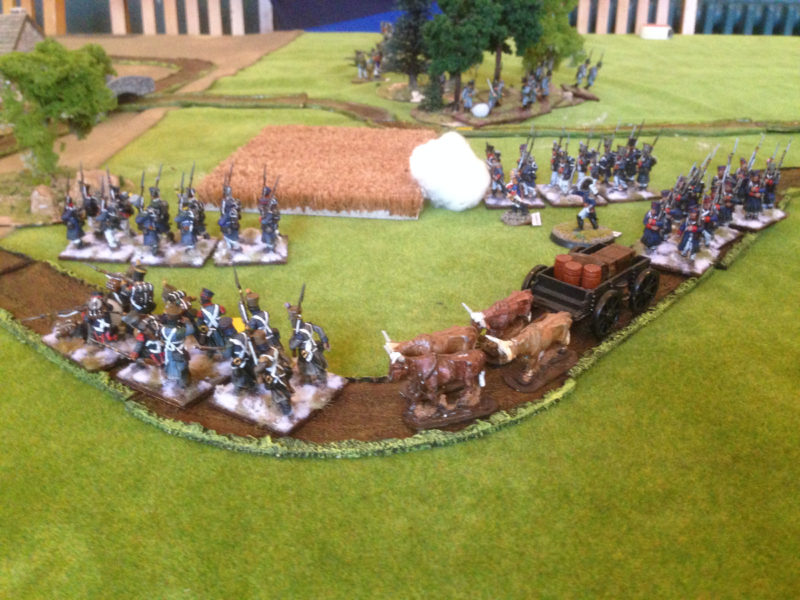
The French convoy presses forwards
It appeared that the French were in the ascendancy, Capitaine Vachequirit was licking his lips at the thought of all of the Cheese that he would be enjoying. However, Austrian reinforcements were on the way! First of all a Cavalry Regiment led by Leutnant Lauda galloped onto the field, threatening the French Flank.
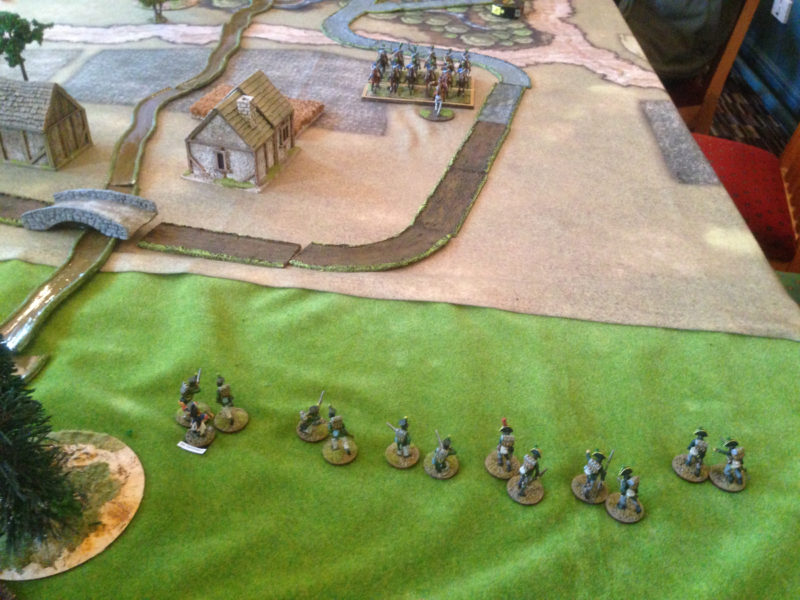
Hussars!
The Austrian optimism was somewhat short lived, Leutnant Lauda was somewhat of a dullard and despite a gallant charge, failed to press home a decisive attack. The French were shaken and the Militia were gradually taking a toll of the French Column. Although the French had now reached the bridge, yet another Austrian reinforcement column had arrived in the shape of Captain von Trapp and two units of regular line infantry.
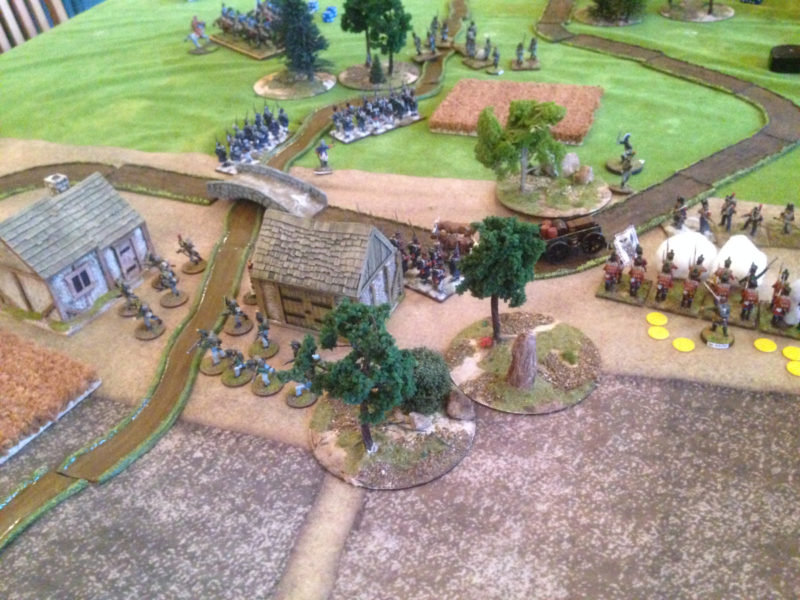
The French reach the village
With the light fading ( literally, the room in the pub could do with a few extra light bulbs!) the French convoy had finally made the bridge and French Skirmishers were in possession of the village. The bad news was that open road lay before them and three fresh units of Austrians, including the rifle armed Tyrolean Jagers were patiently waiting. With a somewhat weakened force and the Austrian militia snapping at their heels, the French were feeling vulnerable.
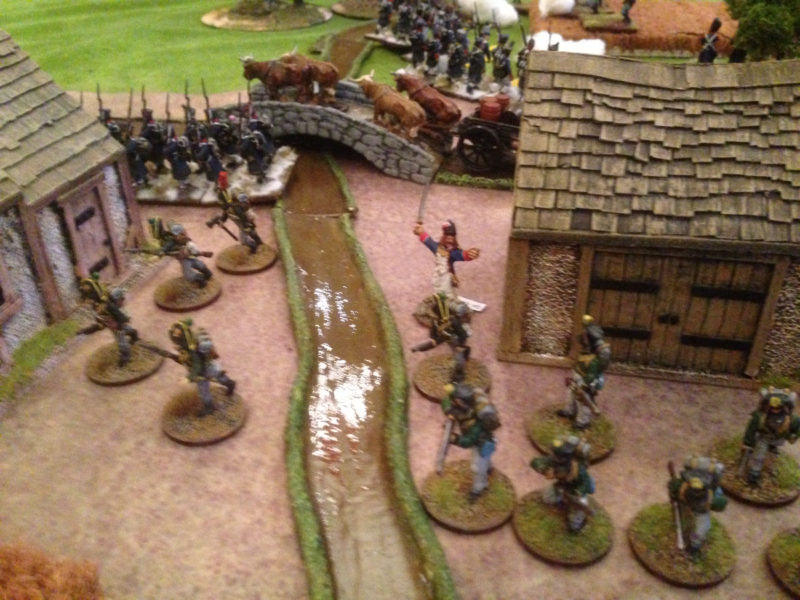
The French gain the Village
A truce was called and it was agreed that the French could leave the valley with their Arms and honour but the Cart Stayed! With terms agreed, the commanders retired to the bar to discuss the game!
Post match analysis!
For a first run through the game played very well. As a result of some of the play, Andy has modified the rules slightly, to make the cavalry a bit more effective when charging and to tighten up the hand to hand combat rules. As with all Skirmish games, too many players can slow things down and with six of us involved there were times when players were left with too little to do. The rules set certainly has the advantage of being straight forward and I think will be an ideal ‘Beer & Pretzels’ rules set for an evenings relaxed gaming. In next weeks blog, I’ll publish the full rules , along with the full scenario details.


